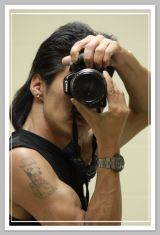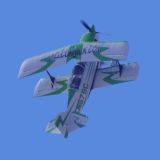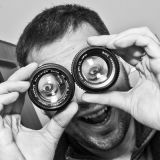- Forum
- Photography and Camera Forum
- Taking the Photo | Editing | The art of Photography!
- Beginner Photography Forum
- on whatfall what do you set the iso too and the shutter speed? i used iso at 100
on whatfall what do you set the iso too and the shutter speed? i used iso at 100
-
 Topic Author
Topic Author
- luckywish1
- Master of the Lens
-
- kodak easyshare and a canon rebel t2i
- Followers: 57
- Posts: 1578
-
Points:
10
Post #34517
-

- Kip
- New Kid On The Block
-
- Canon Eos 1V-HS l; Canon Eos 7D
- Followers: 4
- Posts: 30
-
Points:
0
Post #34522
-

- tennis man
- New Kid On The Block
-
- Canon t2i
- Followers: 6
- Posts: 47
-
Points:
0
Post #34645
-
 Topic Author
Topic Author
- luckywish1
- Master of the Lens
-
- kodak easyshare and a canon rebel t2i
- Followers: 57
- Posts: 1578
-
Points:
10
Post #34683
-
 Topic Author
Topic Author
- luckywish1
- Master of the Lens
-
- kodak easyshare and a canon rebel t2i
- Followers: 57
- Posts: 1578
-
Points:
10
Post #34696
-

- D5000
- New Kid On The Block
-
- Nikon D5000
- Followers: 8
- Posts: 50
-
Points:
0
Post #34727
luckywish1 wrote: the waterfall was going pretty fast too and i thought if you have the camera on auto it would catch it all at the time. and find out after i got home the picture didnt turn out that good and it got me kind of depress about the picture
Taking a picture of a waterfall, you will catch every time. Unless the waterfall ran out of water. Never become depress, just get better.
Post #34769
luckywish1 wrote: this waterfall the iso was at iso 100 and the exposure time 1/160 and f stop was at f 7 i think
Well at 160 you will freeze the action more than blur it. First you need to close up the aperture more like to the maximum if you are not using a polarizer or ND filter. Stopping down will force a slower shutter speed to get the exposure correct. You can then adjust from there. The best advice I can give is to take several shots at differing f-stops at various shutter speeds. You will then learn how ISO, shutter speeds and aperture work in capturing images. Back in the film days I used to keep a notebook and log the settings for each and every shot, now with digital the camera does it for you in the EXIF data.
-

- Cjarvis
- Lone Wolf
-
- nikon d3000 / nikon d200
- Followers: 37
- Posts: 190
-
Points:
10
Post #34776
luckywish1 wrote: the waterfall was going pretty fast too and i thought if you have the camera on auto it would catch it all at the time. and find out after i got home the picture didnt turn out that good and it got me kind of depress about the picture
Get off auto its more fun that way
-

- Rob pix4u2
- Photo Guru
- Nikon N90s & FE film & D90 and D90 digital bodies
- Followers: 196
- Posts: 4204
-
Points:
30
Post #34806
Remember to engage brain before putting mouth in gear
Rob Huelsman Sr.
My Facebook www.facebook.com/ImaginACTIONPhotography
-

- Yasko
- Photography Hooked
-
- Canon 5D, Canon 30D, Olympus tough P&S
- Followers: 47
- Posts: 805
-
Points:
30
Post #34812
-
 Topic Author
Topic Author
- luckywish1
- Master of the Lens
-
- kodak easyshare and a canon rebel t2i
- Followers: 57
- Posts: 1578
-
Points:
10
Post #34852
-
 Topic Author
Topic Author
- luckywish1
- Master of the Lens
-
- kodak easyshare and a canon rebel t2i
- Followers: 57
- Posts: 1578
-
Points:
10
Post #34853
Post #34856
Remind me after the Japanese gardens opens this Spring and we will go out and play with the waterfall there.
Pops
-

- Yasko
- Photography Hooked
-
- Canon 5D, Canon 30D, Olympus tough P&S
- Followers: 47
- Posts: 805
-
Points:
30
Post #34857
luckywish1 wrote: i dont know if my camera has the f 22 on it but i will look tonight on it and see if it goes that high
Aperature range is a function of the particular lens you have, not the camera. I just checked the specs for the lenses you've listed on your profile.
Your 55-250 lens will go up to f32, but only when zoomed to 250mm. Not useful for waterfalls.
Your 18-55 goes up to f36 when set to 55mm. You may not get particularly sharp results at such a closed down aperature (this is called diffraction blurring), but the images should still be quite useable. This is the lens I'd use to get your shutterspeed as slow as possible for running water
- Forum
- Photography and Camera Forum
- Taking the Photo | Editing | The art of Photography!
- Beginner Photography Forum
- on whatfall what do you set the iso too and the shutter speed? i used iso at 100
Latest Reviews
The Fujifilm XT5 is a 40MP mirrorless camera capable of 6.2K video at 30p. With those specs, it’s an ideal choice for photographers needing a camera to pull double duty for imaging and video.
The Canon EOS R100 is an entry-level mirrorless camera introduced in 2023. But just because it’s an entry-level camera doesn’t mean it’s a bare-bones camera. Find out why in this review!
Nikon’s retro-looking Nikon Zfc is anything but retro. Under its classic body is a host of features and amenities that make it a worthwhile compact mirrorless camera for 2024.
The Canon EOS R50 is one of the newest R-system cameras from Canon. Is it worth your money? Find out all the details you need to know in this comprehensive review.
Latest Articles
Urban photography is a genre showcasing features in urban settings. You can photograph people, architecture, mass transit, and many other subjects. Learn how to do so in this guide!
The Nikon D850 might be an older DSLR, but it was ahead of its time when it debuted in 2017. That means it still has plenty of firepower to compete with today’s powerful mirrorless cameras.
The best beginner camera isn’t the same for everyone. That means having choice is of the utmost importance. In this guide, explore five excellent beginner camera options for 2024 and beyond.
Child portrait photography is a unique undertaking requiring special skills and talents to get the best results. Start mastering this photography niche with these essential tips!
The Fujifilm XT5 is a 40MP mirrorless camera capable of 6.2K video at 30p. With those specs, it’s an ideal choice for photographers needing a camera to pull double duty for imaging and video.
Using leading lines in photography helps improve the composition by drawing viewers in and leading their eye from the foreground to the background. Explore some fine examples of this in this guide!
The Insta360 has one of the best lineups of action cams and 360-degree cameras. With these Insta360 accessories, you can elevate your photography and videography game!
Creating impactful photos of landscapes depends on many factors, not the least of which is your talent behind the lens. This guide explores other elements required for the best product.














